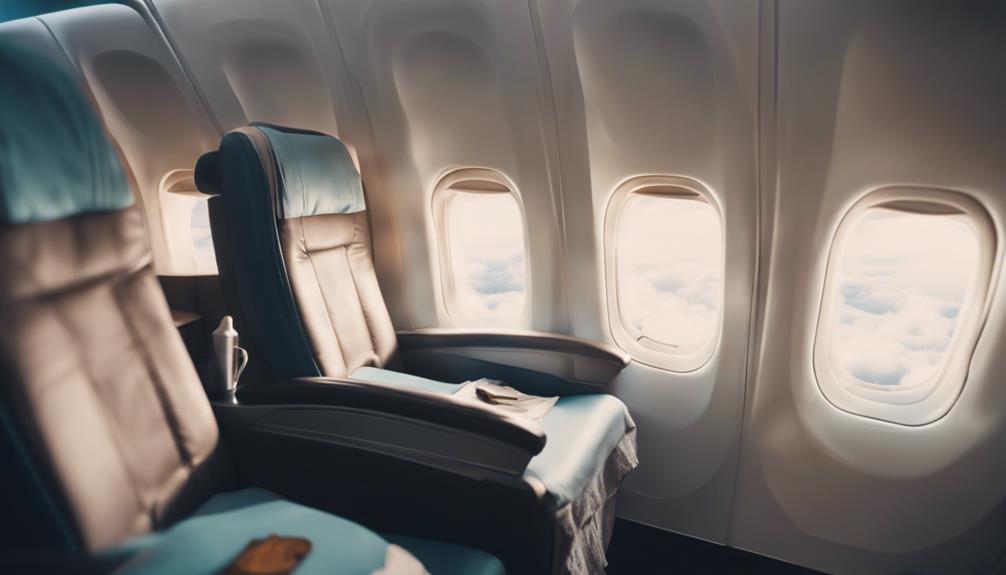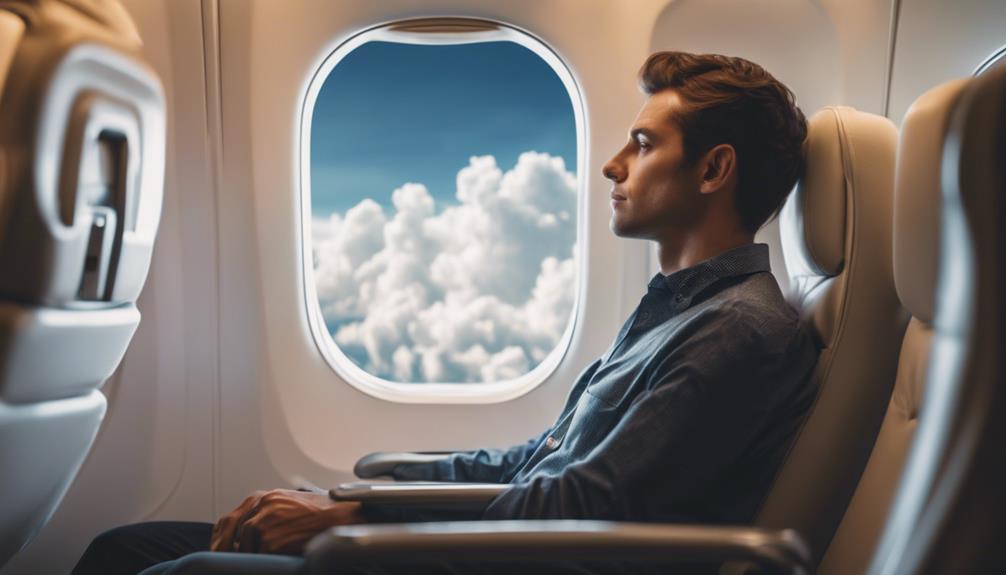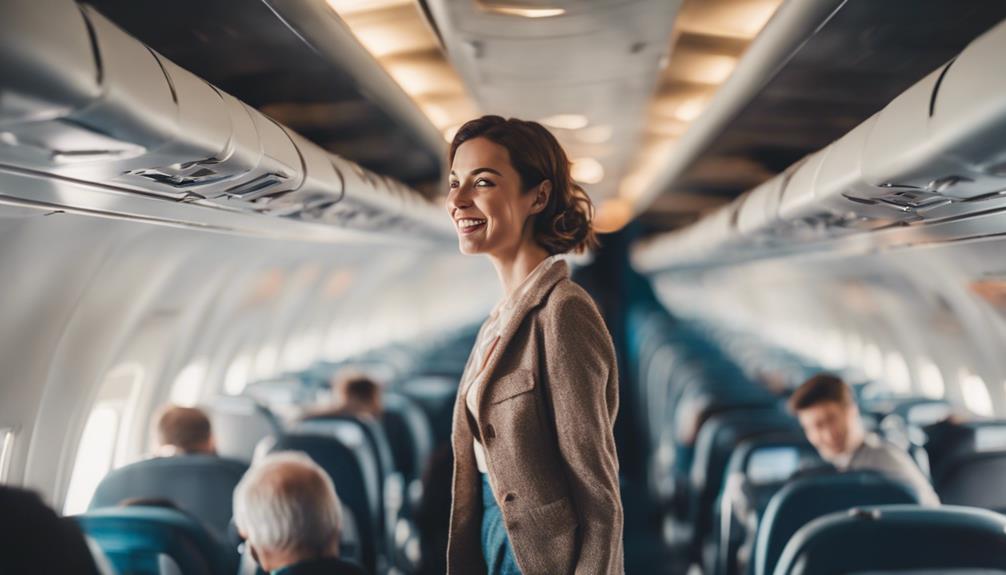
Hypnosis, EFT, and NLP offer powerful tools to conquer the fear of flying. These techniques swiftly address anxieties and rebuild confidence in air travel. Hypnosis provides rapid relief and long-lasting resolutions. EFT delivers anxiety relief, while NLP equips individuals to combat fear. By integrating these approaches, anxiety diminishes, the mind-body connection strengthens, and self-confidence thrives. Success stories exemplify the effectiveness of these methods, from addressing all-encompassing fears to unraveling root causes. Techniques like visualization, affirmations, and mindfulness empower individuals to fly confidently. For a thorough understanding of conquering fear, explore the benefits these tools provide.
Understanding Fear of Flying
Understanding the fear of flying involves recognizing the complex interplay of psychological and physiological factors that contribute to this specific phobia. The key cause of this fear can vary from person to person, including past traumatic experiences, fear of heights, lack of control, or even fear of enclosed spaces. Coping mechanisms are essential for managing this fear, and individuals often resort to avoidance behaviors, sedatives, or therapy to alleviate their anxiety. However, these strategies may only provide temporary relief without addressing the underlying issues.
Developing a deeper understanding of the fear of flying can help individuals overcome this phobia more effectively. By exploring the specific triggers and thought patterns that contribute to their anxiety, individuals can begin to challenge and reframe their fears. Building resilience through relaxation techniques, mindfulness practices, and gradual exposure to flying situations can also aid in desensitizing the fear response. Ultimately, addressing the root cause of the fear and implementing healthy coping mechanisms are critical steps towards conquering the fear of flying.
Benefits of Hypnosis for Phobias

Hypnosis offers a path to rapid relief from phobias, providing individuals with a way to address their fears efficiently. Through hypnosis, long-lasting resolutions can be achieved, giving individuals the tools to overcome their phobias for good.
This method can offer a practical and effective solution for those seeking to free themselves from the grip of fear.
Rapid Fear Relief
For individuals seeking rapid relief from phobias, hypnosis offers an effective and efficient solution. Through the focused use of hypnosis techniques, fear resolution can be achieved swiftly and effectively.
Hypnosis works by accessing the subconscious mind to address the root cause of the phobia, allowing for rapid transformation and relief. By guiding individuals into a deeply relaxed state, hypnosis helps reframe negative thought patterns and associations related to the phobia, leading to a reduction in fear responses.
This process can bring about a quick alleviation of phobia symptoms, providing individuals with the tools to manage and overcome their fears more effectively. Rapid fear relief through hypnosis can empower individuals to face their phobias with newfound confidence and resilience.
Long-Lasting Phobia Resolution
In the realm of phobia resolution, the advantages of hypnosis go beyond mere temporary relief, providing a pathway to long-lasting transformation and empowerment. Hypnosis explores the underlying causes of phobias, addressing phobia triggers and the associated emotional responses.
By facilitating trauma processing and subconscious reprogramming, hypnosis allows individuals to reframe their perceptions and responses to triggers. This deeper level of therapeutic intervention can lead to profound and enduring changes in how individuals perceive and react to their phobias.
Through hypnosis, individuals can confront their fears in a safe and controlled environment, enabling them to gradually diminish the intensity of their phobia responses and ultimately achieve lasting freedom from their fears.
EFT Techniques for Anxiety Relief

Effective in reducing feelings of anxiety, Emotional Freedom Techniques (EFT) offer a practical and empowering approach to managing stress and promoting emotional well-being. EFT techniques involve tapping on specific acupressure points on the body while focusing on the anxiety or fear experienced. Here are three key EFT techniques for anxiety relief:
- The Setup: Begin by acknowledging the anxiety you are feeling. While tapping the karate chop point on the hand, repeat a setup statement that combines acceptance of the anxiety with a positive affirmation. For example, 'Even though I feel anxious about flying, I deeply and completely accept myself.'
- The Sequence: Tap on specific meridian points on the body while focusing on the anxiety. These points include the top of the head, eyebrow, side of the eye, under the eye, under the nose, chin, collarbone, and under the arm. Repeat a reminder phrase about the anxiety during each tap.
- The Reevaluation: After completing the tapping sequence, take a moment to reassess your anxiety level. Notice any shifts in intensity or thoughts that come up. If needed, repeat the tapping process until you feel more grounded and calm.
NLP Strategies for Overcoming Fear

When facing fear, NLP strategies offer powerful tools for shifting mindsets and utilizing visualization techniques.
By incorporating these methods, individuals can begin to reframe their thoughts and emotions surrounding flying, paving the way for a more positive and confident outlook.
Through practical application and dedication, NLP can help individuals overcome their fear of flying and regain a sense of control.
Mindset Shift Techniques
Utilizing Neuro-Linguistic Programming (NLP) strategies can empower individuals to reshape their mindset and effectively combat fear of flying. When it comes to addressing the fear of flying, integrating mindset shift techniques is vital.
Here are three practical NLP strategies to help individuals overcome this fear:
- Mindset Shift: NLP techniques can help individuals reframe their thoughts and beliefs about flying, turning fear into confidence.
- Relaxation Techniques: NLP encourages the use of relaxation methods such as deep breathing to calm the mind and body during times of anxiety.
- Positive Affirmations: By using positive affirmations, individuals can replace negative self-talk with empowering statements, reinforcing a sense of safety and control.
Visualization Tools
To further enhance the process of overcoming the fear of flying through NLP strategies, incorporating visualization tools can greatly aid individuals in reprogramming their subconscious responses to flying-related anxieties. Visual relaxation techniques can be utilized to create a sense of calm and control in the face of fear. By engaging in guided imagery, individuals can mentally rehearse successful and peaceful flights, gradually desensitizing themselves to triggers that cause distress.
Visualization tools offer a powerful way to access the subconscious mind and replace negative associations with positive and empowering images. Through consistent practice, individuals can train their minds to respond differently to flying, fostering a sense of confidence and ease. Embracing these techniques can lead to lasting changes in perception and behavior, ultimately overcoming the fear of flying.
Combining Hypnosis, EFT, and NLP

In the integration of hypnosis, EFT, and NLP, a potent synergy emerges that can effectively address the fear of flying. Combining these techniques offers a holistic approach to anxiety management and relaxation techniques, providing individuals with a complete toolkit to overcome their fear and regain control over their emotions.
Here are three key ways in which the integration of hypnosis, EFT, and NLP can benefit those struggling with the fear of flying:
- Anxiety Reduction: Hypnosis can help individuals enter a deeply relaxed state, allowing them to confront and reframe their fears. EFT can then be used to address specific fears or triggers associated with flying, providing relief from anxiety symptoms.
- Mind-Body Connection: NLP techniques focus on the connection between thoughts, emotions, and behaviors. By leveraging this connection, individuals can develop new patterns of thinking and reacting to flying-related stimuli.
- Empowerment and Self-Confidence: Through the combined use of hypnosis, EFT, and NLP, individuals can cultivate a sense of empowerment and self-confidence, enabling them to approach flying with a newfound sense of calm and control.
Success Stories of Fear Resolution

Upon implementing the integrated approach of hypnosis, EFT, and NLP for combating the fear of flying, numerous individuals have experienced transformative success in overcoming their anxieties and reclaiming their confidence in air travel. Through client testimonials, it becomes evident that these techniques have been instrumental in helping individuals conquer their fear of flying.
One such success story involves a client who had avoided air travel for years due to debilitating anxiety. After undergoing sessions combining hypnosis, EFT, and NLP, the client reported feeling calm and composed during their next flight, a significant breakthrough that had seemed insurmountable before.
These techniques not only address the surface-level fear but also explore deeper into the root causes, enabling individuals to confront and overcome their obstacles effectively. By incorporating client feedback and adapting the approach to suit individual needs, the combination of hypnosis, EFT, and NLP proves to be a powerful tool in resolving the fear of flying.
Tips for Flying Confidently

Flying confidently can be achieved through a combination of preparation, mindfulness, and self-awareness. When it comes to overcoming the fear of flying, incorporating confidence-building exercises and positive affirmations can be highly beneficial.
Here are three practical tips to help you fly with confidence:
- Practice Confidence Building Exercises: Engage in activities that boost your self-assurance, such as visualization techniques where you see yourself calm and in control during a flight. Positive affirmations like 'I am safe and secure while flying' can also help rewire your mindset.
- Utilize Relaxation Techniques: Before and during the flight, practice relaxation techniques such as deep breathing exercises. Focus on your breath, inhaling slowly through your nose and exhaling through your mouth to calm any anxiety or tension.
- Stay Mindful and Self-Aware: Be present in the moment and acknowledge your feelings without judgment. Understand that it's normal to feel apprehensive but remind yourself of your preparedness and coping strategies to stay grounded.
Frequently Asked Questions
Can Hypnosis, Eft, and NLP Be Used to Treat Other Phobias or Fears Besides Fear of Flying?
Anxiety management and phobia treatment can be effectively addressed through various therapeutic modalities, including hypnosis, EFT, and NLP. These techniques offer tailored approaches to tackle a wide range of fears and phobias, promoting lasting emotional well-being.
How Long Does It Typically Take for Hypnosis, Eft, and NLP to Effectively Resolve a Fear of Flying?
Successfully resolving a fear of flying varies based on individual factors such as severity of phobia, personal history, and willingness to engage in treatment. Success rates are influenced by commitment to therapy, with timeframes ranging from weeks to several months.
Are There Any Potential Risks or Side Effects Associated With Using Hypnosis, Eft, and NLP for Overcoming Fear of Flying?
When considering methods to address the fear of flying, it is essential to be aware of potential benefits, limitations, safety concerns, and precautions. Understanding these aspects can help individuals make informed decisions about their treatment options.
Can These Techniques Be Used in Conjunction With Traditional Therapy or Medication for Fear of Flying?
Alternative therapies like hypnosis, EFT, and NLP can be used in conjunction with traditional therapy and medication for fear of flying. These complementary approaches offer additional tools and techniques to address the phobia, enhancing treatment outcomes.
Are There Any Specific Qualifications or Certifications to Look for in a Practitioner Offering Hypnosis, Eft, and NLP for Fear of Flying?
When seeking assistance for fear of flying using alternative therapies, it is important to take into account the practitioner's qualifications and certifications. Look for professionals with relevant training in hypnosis, EFT, and NLP to guarantee effective and safe treatment.
Conclusion
To summarize, fear of flying can be effectively addressed through the use of hypnosis, EFT, and NLP techniques. These methods offer individuals practical strategies to overcome their anxiety and phobias, leading to increased confidence and a sense of empowerment.
By combining these approaches, individuals can experience significant improvements in their ability to fly without fear. Remember, with the right tools and support, it is possible to conquer your fear of flying and enjoy the benefits of travel.
Take the Next Step
Do not be afraid to reach out to me, Mark E Wilkins, to assist you in any issues you might have. Most Hypnotherapy sessions last 2 hours and EFT Sessions are usually handled with one session. Life Coaching is 45 minute session, once a week. Self-Hypnosis is taught in one session, and lasts a lifetime.
To make an appointment, first listen to the Pre-talk and fill out he Complementary Healthcare Provider Disclosure. The use the Contact Form to request an appointment with the Bohol Hypnosis Expert.
Self-help downloads are available. The self-hypnosis program to teach you how to self-hypnotize is here.





